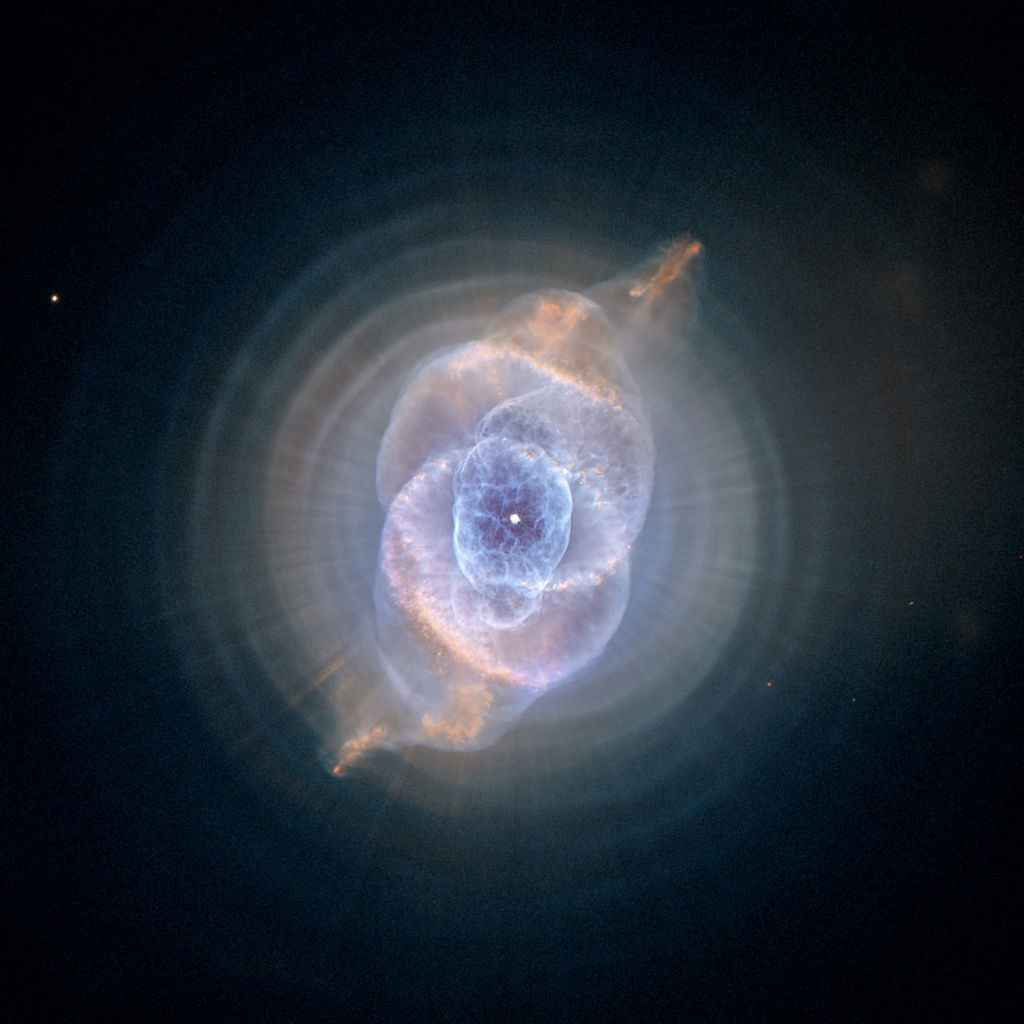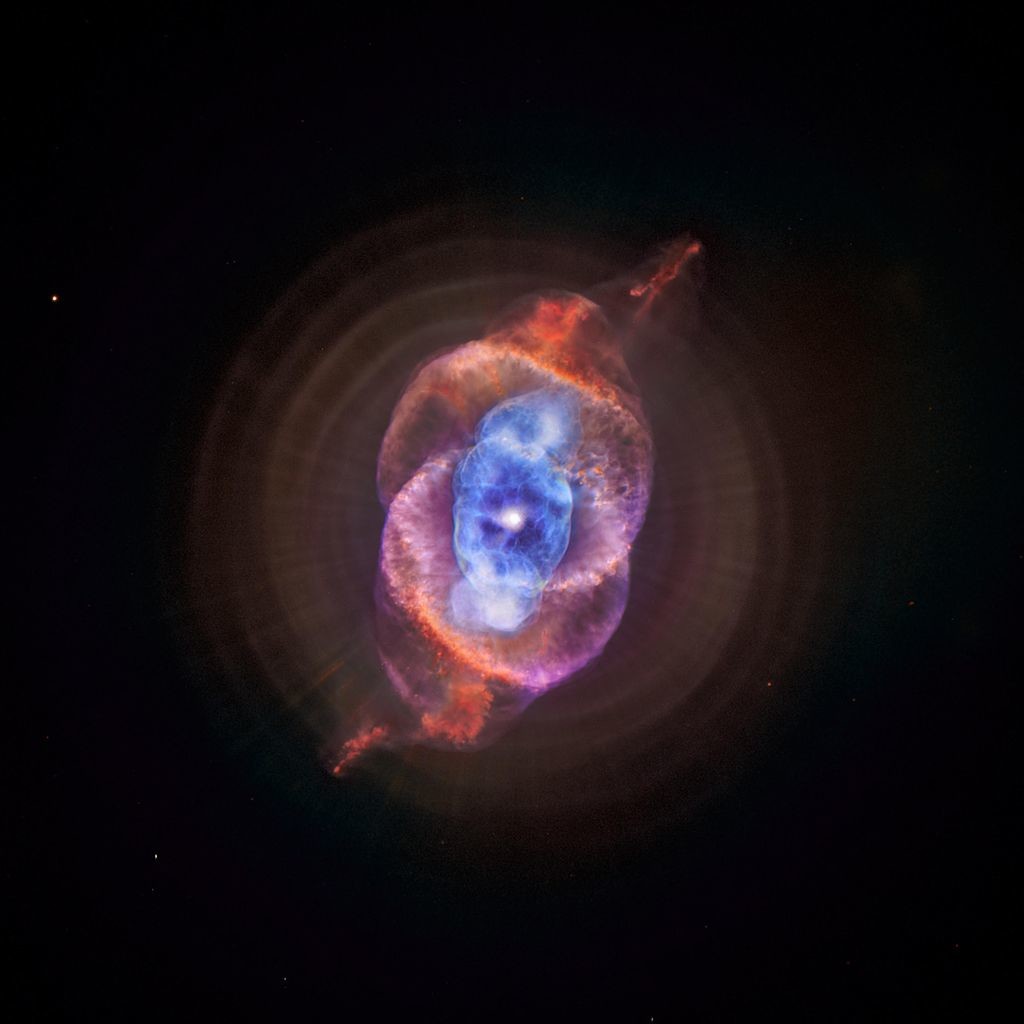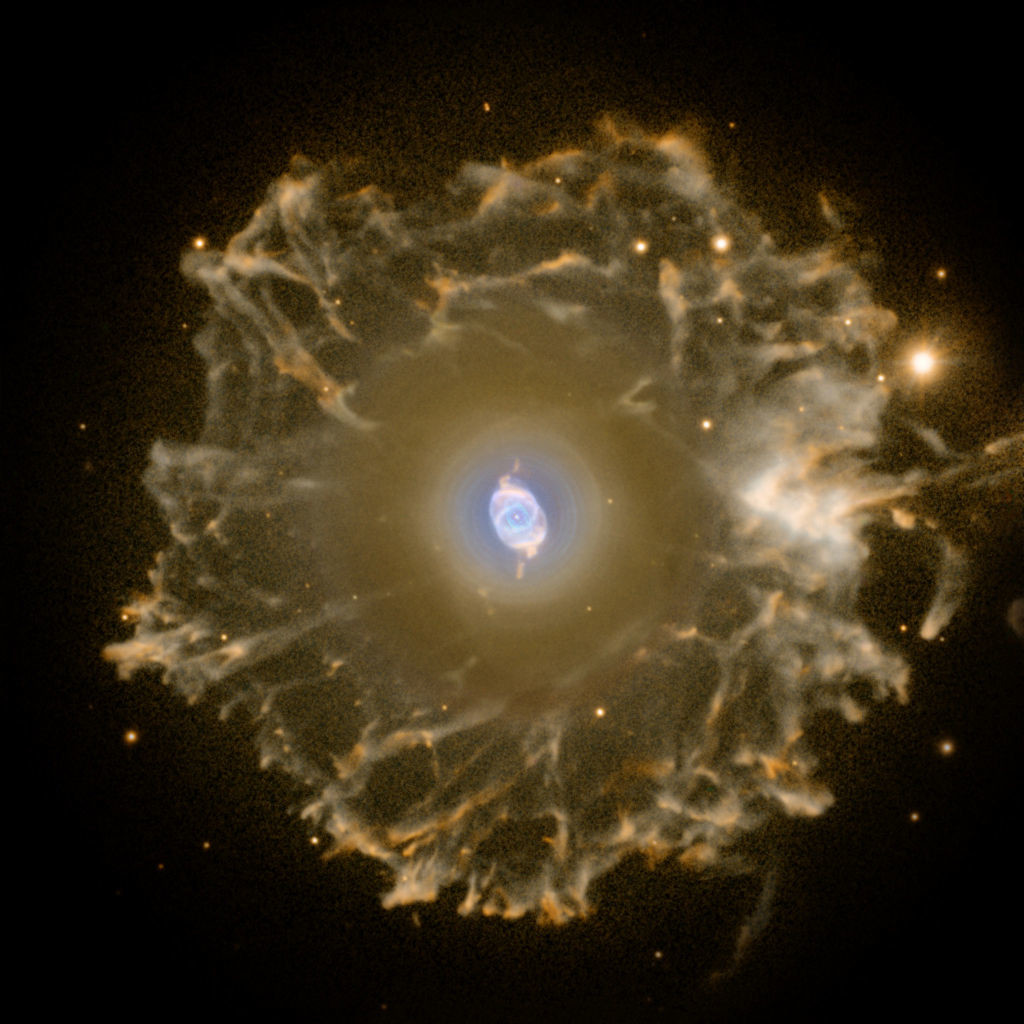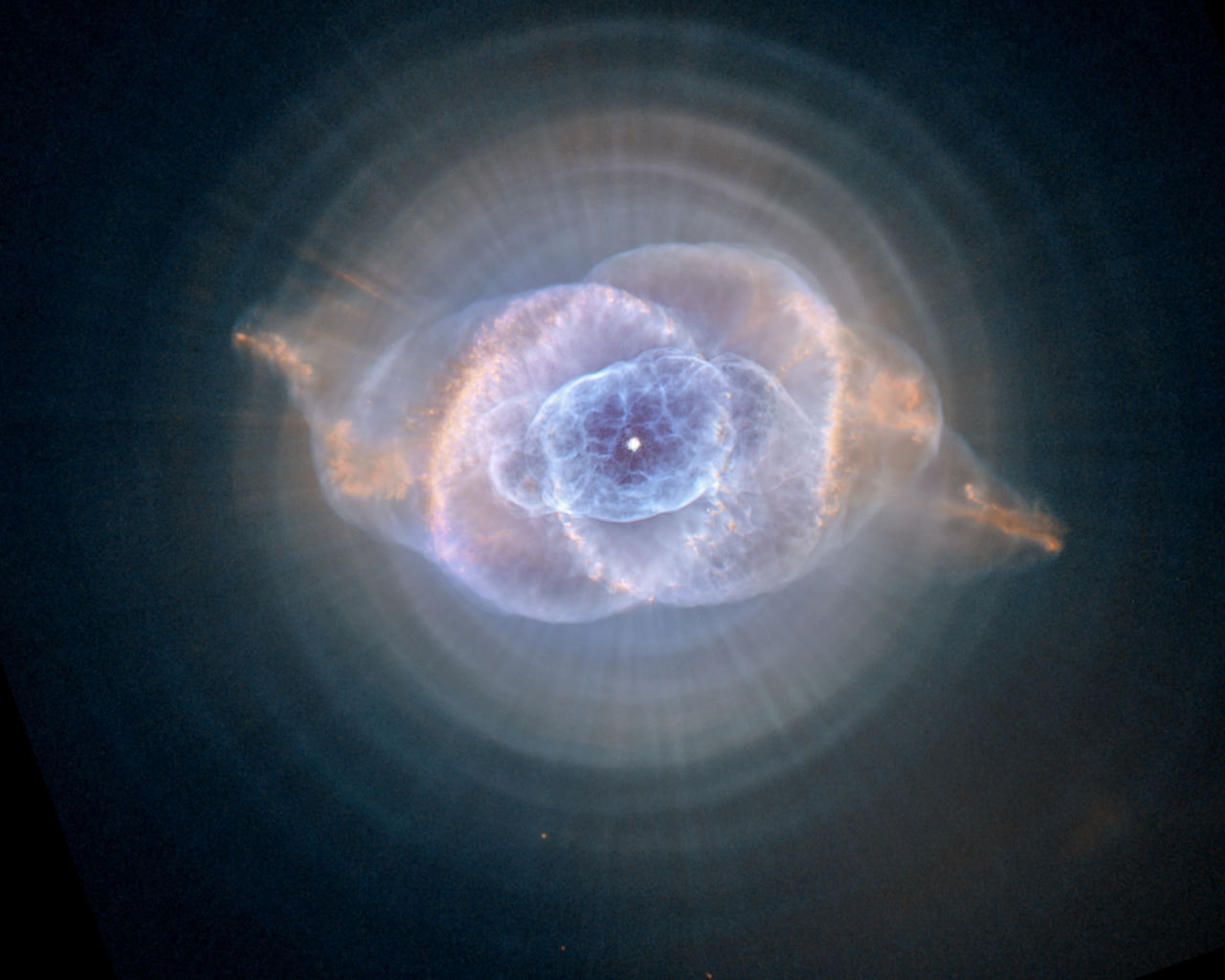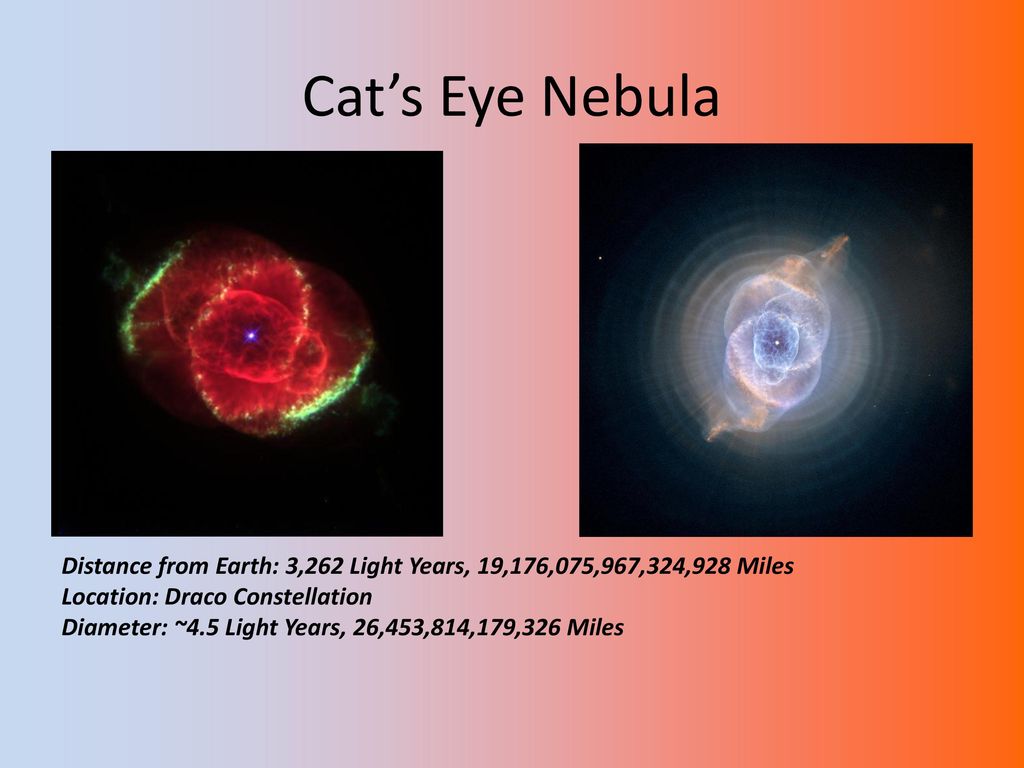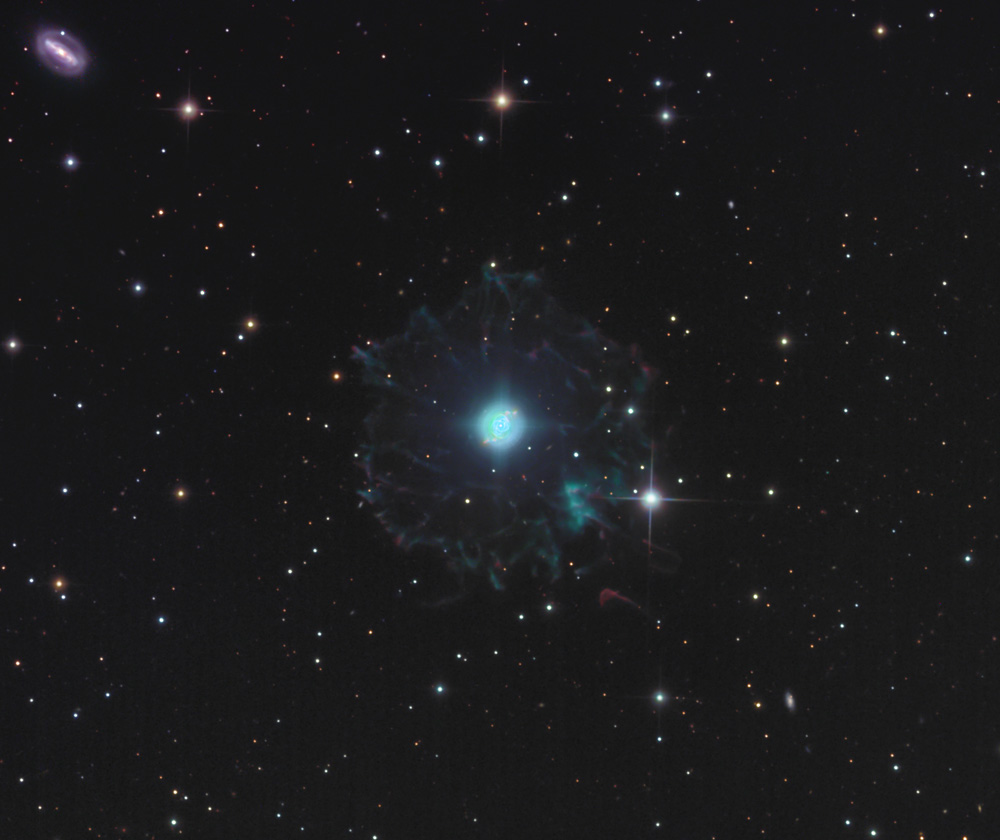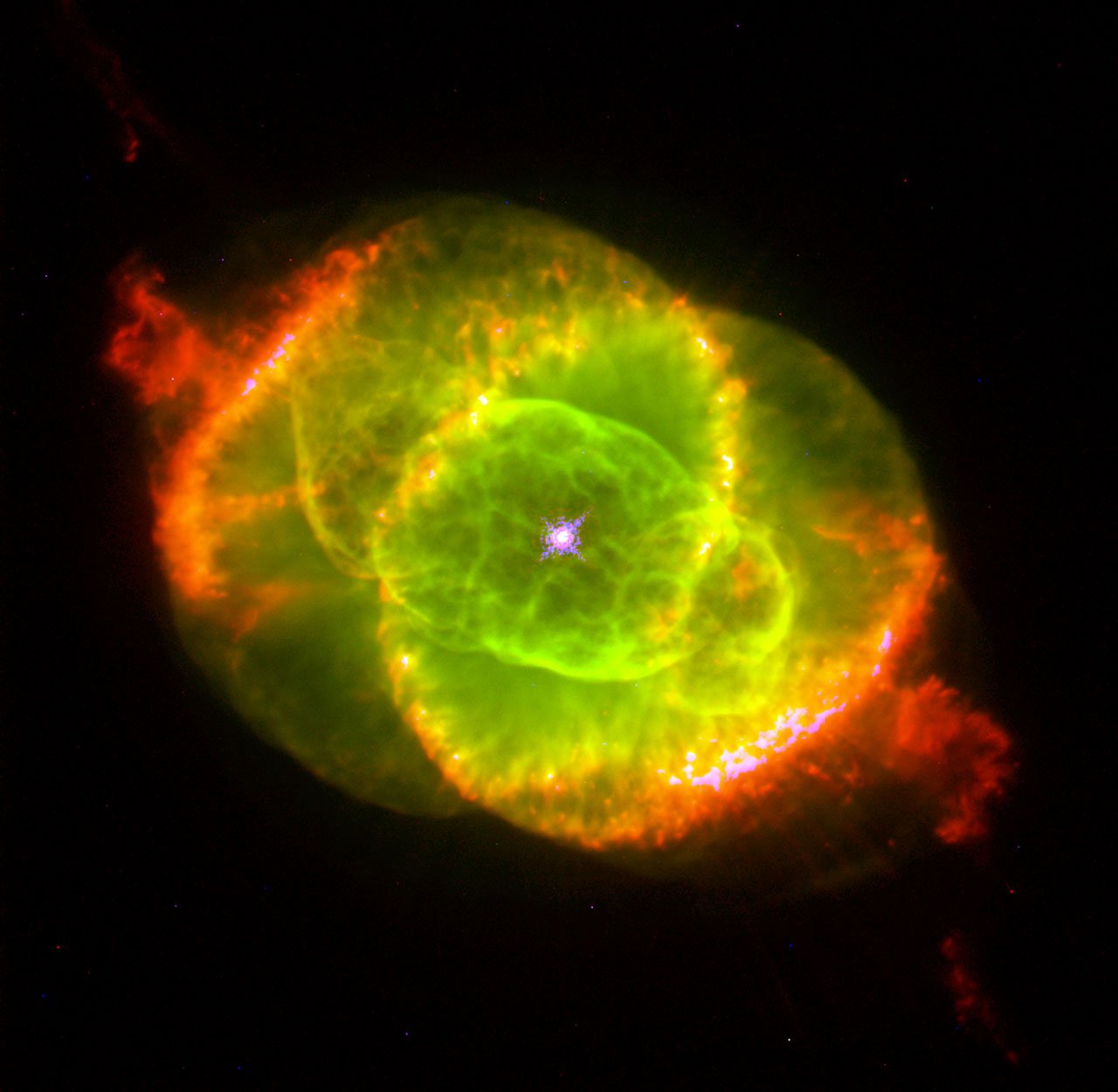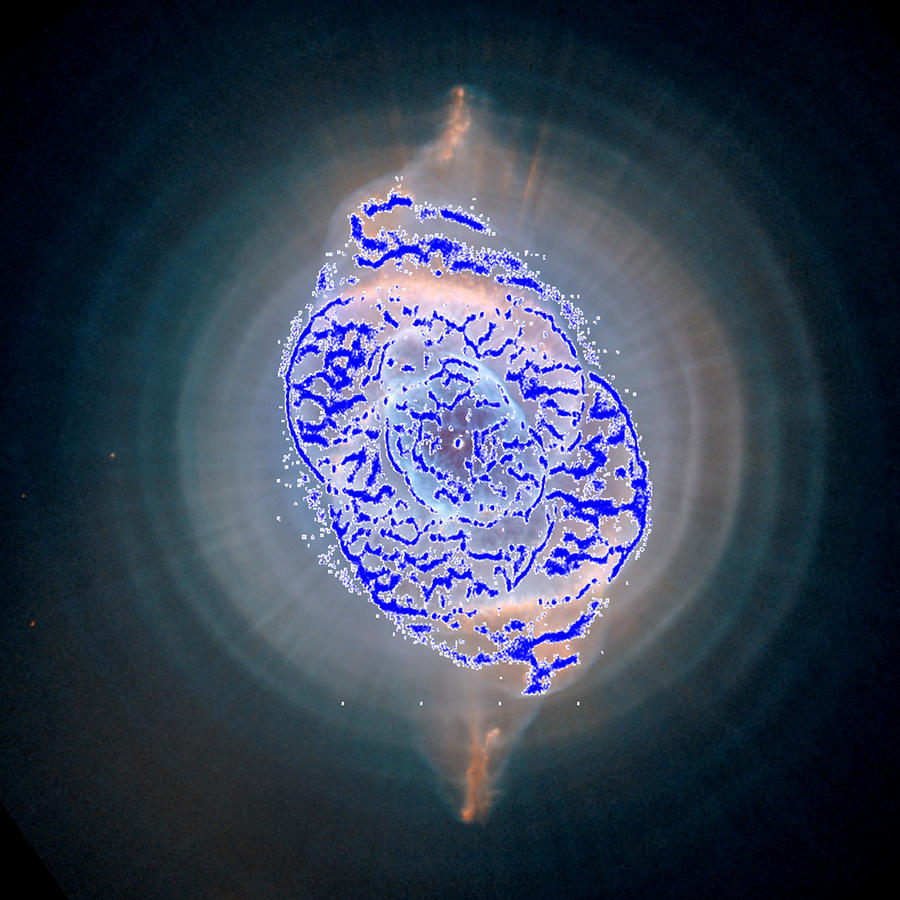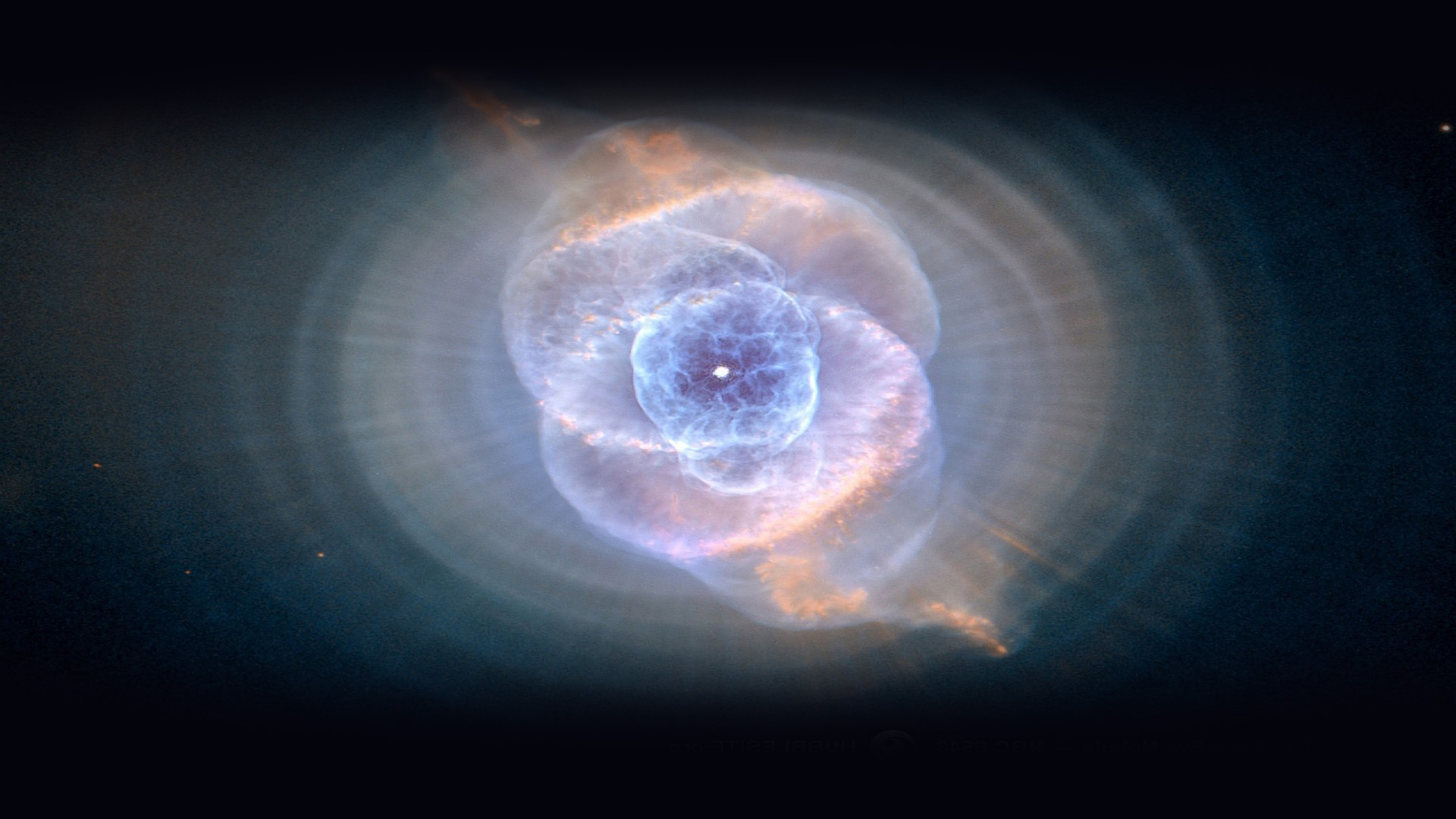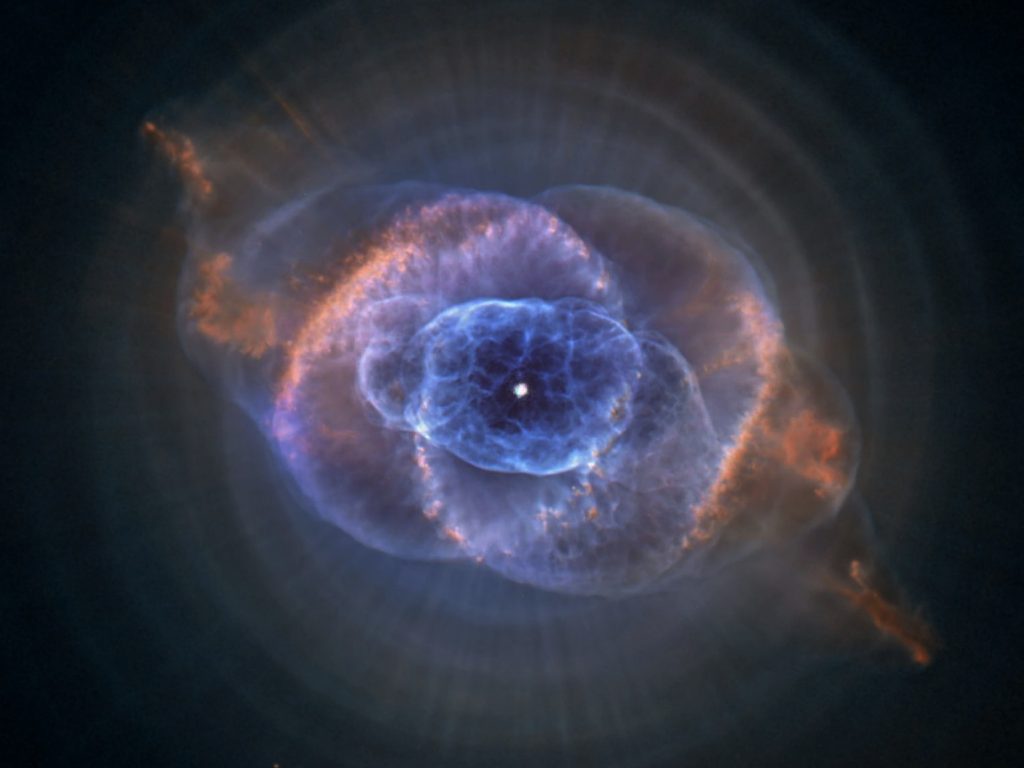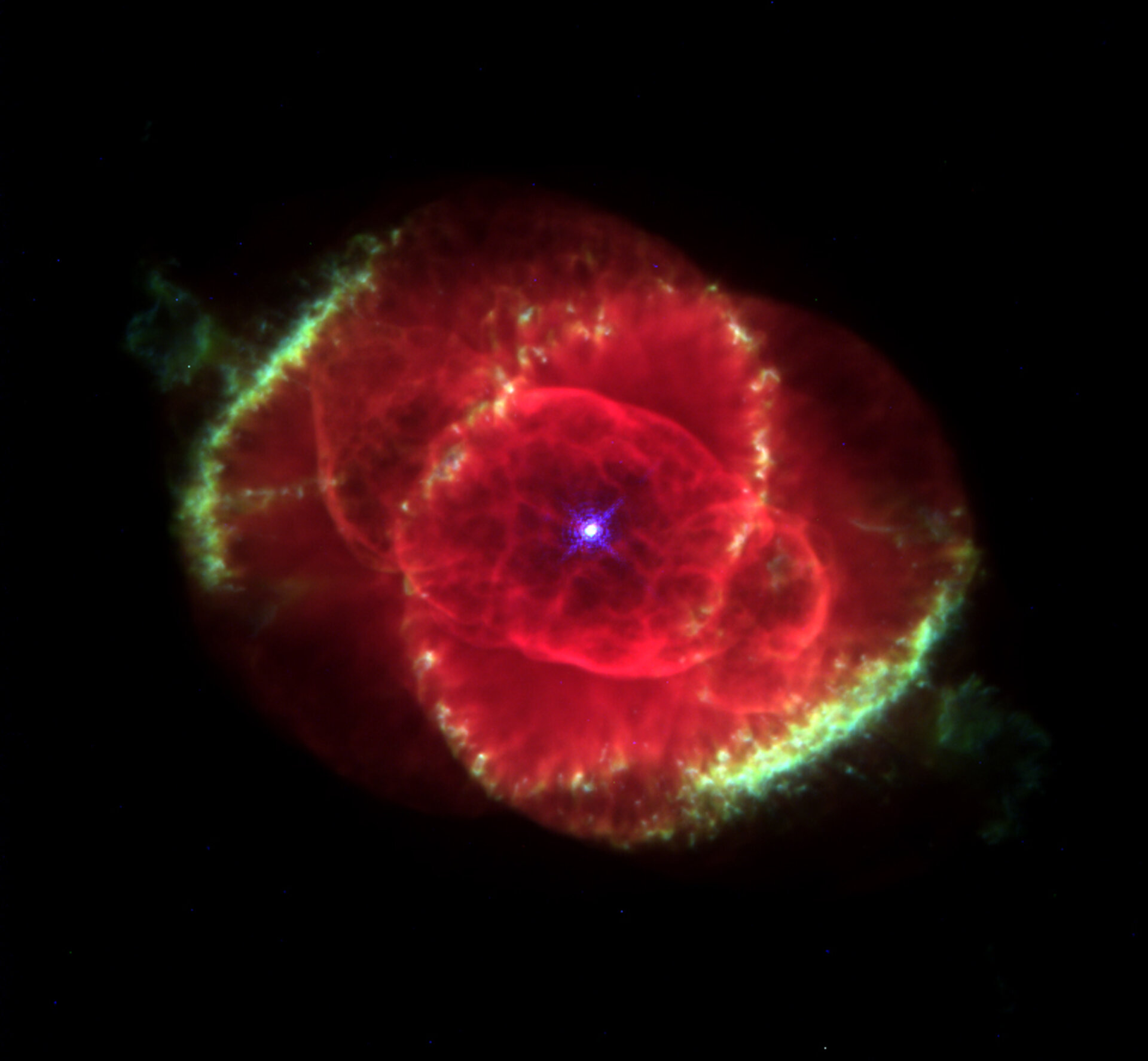Cat's Eye Nebula Facts
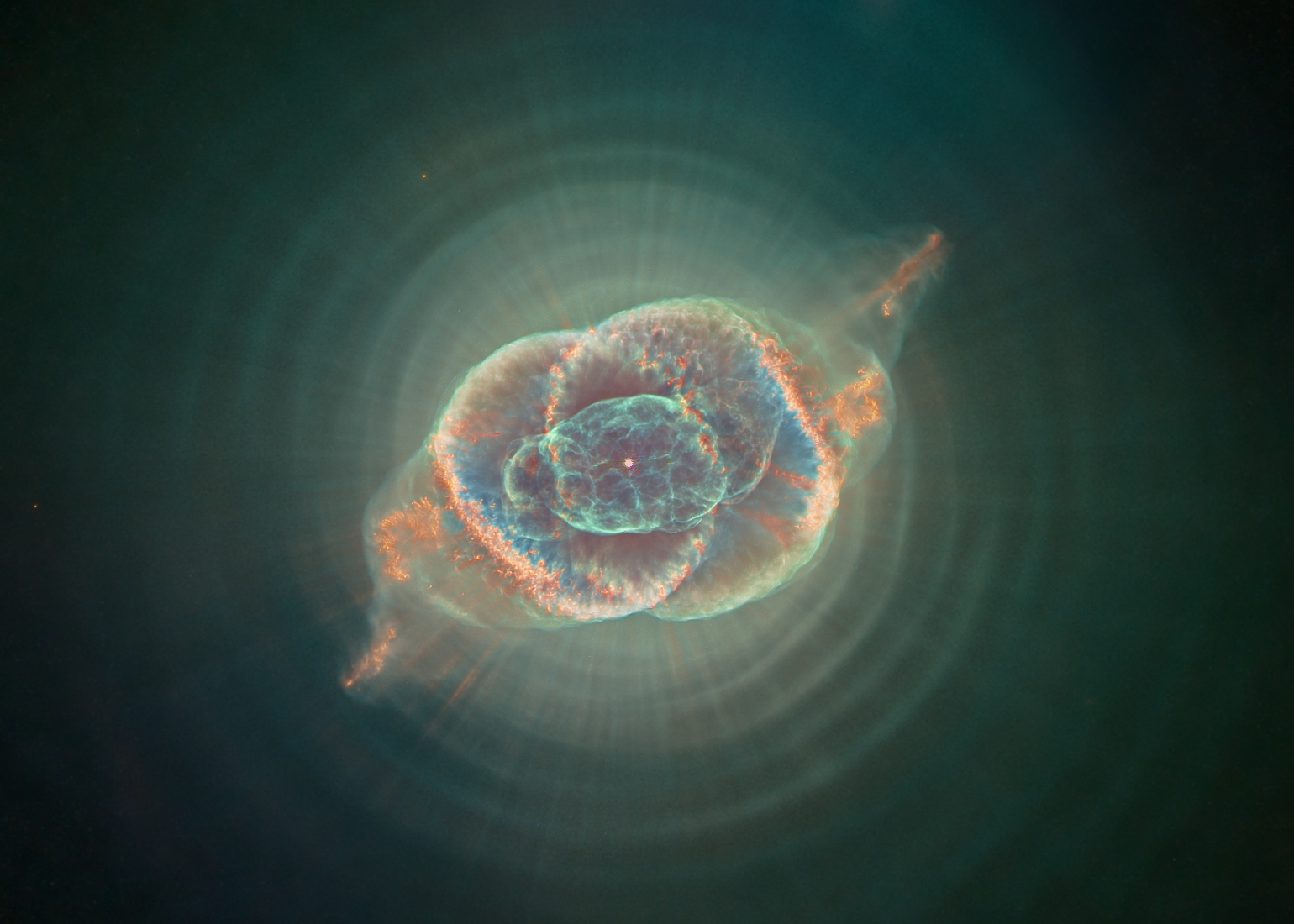
The Cats Eye Nebula has a complicated and beautiful structure made from multiple expanding spheres of gas.
Cat's eye nebula facts. This planetary nebula has an amazing symmetry as can be seen in the Hubble images all due to the death-throws of a star located at its center. But as time passed that star lost most of its fuel and got older wit. The HST images seem to indicate that the central star is actually a binary system and that the nebula we see today is actually the result of at least two separate events.
The nebulas designation in the New General Catalogue is NGC 6543. One problem that scientist face with planetary nebula is determining their distance from earth. A planetary nebula forms when Sun-like stars gently eject their outer gaseous layers that form bright nebulae with amazing and confounding shapes.
First discovered by William Herschel on February 15th 1786 this planetary nebula is a real gem of the night sky. This image was acquired by NASAs MESSENGER spacecraft as a high-resolution targeted color observation. A planetary nebula is the glowing gas ejected during the final stages of evolution of a star similar in mass to our Sun.
The Cats Eye Nebula was the first planetary nebula to be discovered with a spectroscope. No two look alike. Email ThisBlogThisShare to TwitterShare to FacebookShare to Pinterest.
This NASA Hubble Space Telescope image shows one of the most complex planetary nebulae ever seen NGC 6543 nicknamed the Cats Eye Nebula Hubble reveals surprisingly intricate structures including concentric gas shells jets of high-speed gas and unusual shock-induced knots of gas. It is a northern hemispheric constellation. Each ring is actually the edge of a spherical bubble seen projected onto the sky - thats why it appears bright along its outer edge.
The image title is in reference to the Cats Eye Nebula a well studied iconic nebula that shares similar features to this image of Eminescu such as notably the blues yellows and spherical shape of the formation. This is one of the most complex of the planetary nebulae. It was formed around 1000 years ago when a hot bright central star expelled its outer envelope.
